Read all of art critic David Apatoff’s columns here.
The year was 1902, and a young art student named Newell Convers Wyeth decided to take a chance and submit a proposal for the cover of The Saturday Evening Post. The whole idea was outlandish; Wyeth had only been an art student for six months. Many older, more experienced professionals had never won a coveted Post cover assignment. But Wyeth was young and brash and besides, he needed the money.
Much to the surprise of Wyeth and his art teachers, the Post accepted Wyeth’s first idea. He was paid $50 to paint a cover of a cowboy on a bucking bronco. Wyeth was in heaven.
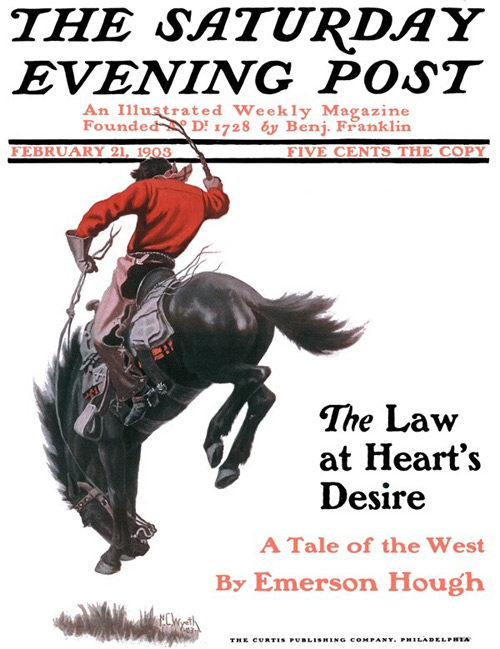
No one could have predicted in 1903 that this was not just the beginning of Wyeth’s career, but the start of three generations of artists, the most prominent art dynasty in American history.
Newell (known as N.C.) would become a famous illustrator. In 1917 he would father one of the leading fine artists of the 20th century, Andrew Wyeth. Andrew won the Congressional Gold Medal and the President’s Medal of Freedom; his art was exhibited at the White House and in many of the premier art museums around the world. In 1946, Andrew would father Jamie Wyeth, a child prodigy who received his first art commission at age 17, and who would go on to become the subject of many exhibitions and books.
Other members of the Wyeth family, such as Carolyn and Henriette Wyeth, became well known artists in their own right. Family member Peter Hurd was also a prominent artist, selected to paint the portrait of President Lyndon Johnson.
These three generations of artists not only provide a microcosm of changes in the art of the 20th century, but also offer insights into the evolution of America itself.
But it all began with that first cover for the Post.
The Post was so impressed with Wyeth’s potential that it took an interest in his artistic growth. It helped pay for an art expedition out west for Wyeth to collect background reference material for future western illustrations. Wyeth, born and raised in Massachusetts, had never been west and the Post wanted a little more authenticity in its cowboy illustrations.
So in 1904, Wyeth took time off from art school to travel to Colorado, Arizona, and New Mexico, where he studied the rugged landscapes, learned about mountain trails, visited remote trading posts, and sat with local tribes. The trip was a wonderful growth experience; Wyeth crammed his portfolios full of sketches and brought back props, saddles, bridles, guns, rugs, and costumes, which he used in later paintings.
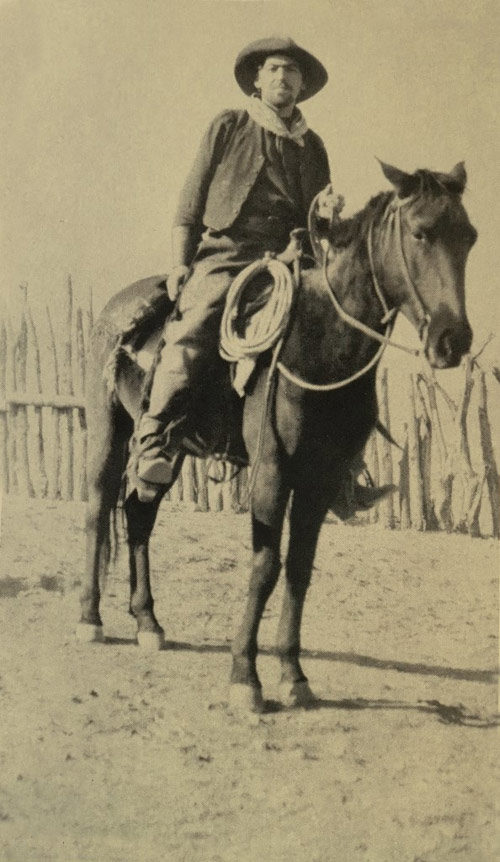
Wyeth adored the vivid and muscular life of the West. He filled his journals with romantic stories from his travels:
I was hungry and tired as I never was before. After supper, a circle of men gathered about the campfire.… The conversation slowly died with the fire and one by one the dark somber faces disappeared from the light. I was the last to leave. I crawled into my blankets and lay for a moment looking into the heavens at the myriad of stars.… As I lay there I heard the faint singing of a night herder floating across the plains.
When Wyeth returned east, the Post quickly began to reap the benefits of the expedition it had subsidized.
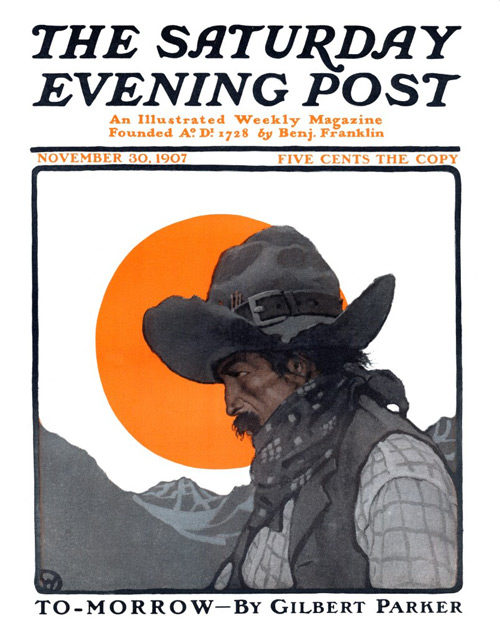
N.C. was especially noted for his sensitive portrayal of the Native Americans. While many of his contemporaries depicted Native Americans as fiercely painted warriors, Wyeth — who had spent time with Native Americans during his expedition and grown to like them — depicted them as noble people, with deep feelings for nature.
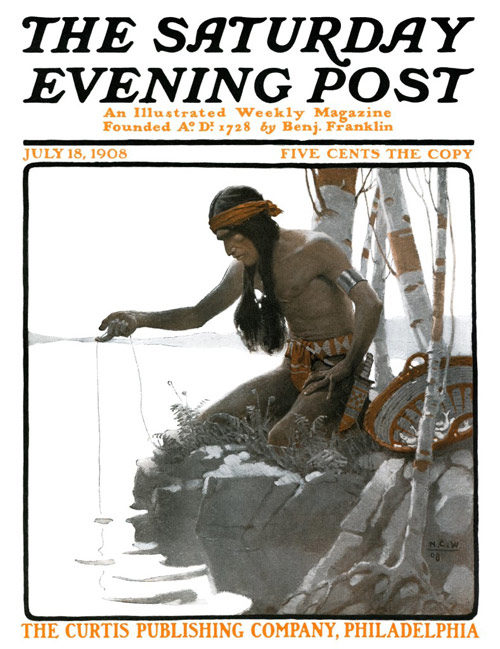
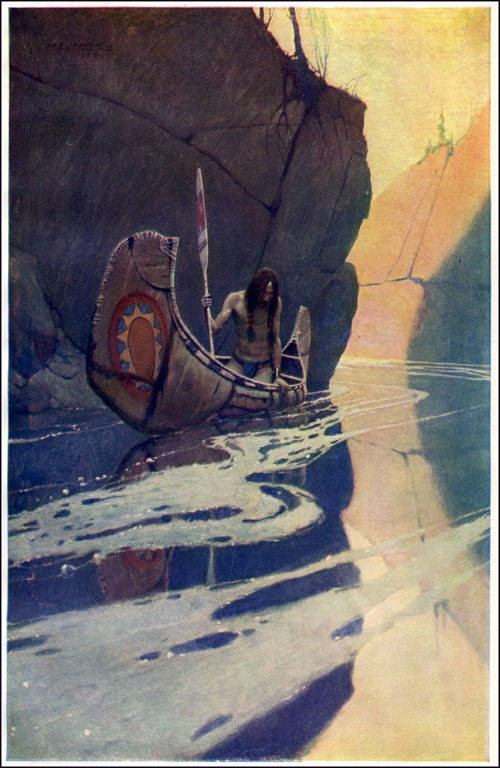
But Wyeth was far more than a “Western” painter. Well into the 1930s he was deluged with requests to illustrate Western books and magazines, but in reality, N.C. was a hugely prolific artist who painted a wide variety of subjects. In his first 17 years as an illustrator, from 1903 through 1919, he created 561 illustrations for 274 periodicals in addition to the Post.
In his later years he began to become dissatisfied with his job as illustrator. He aspired to be a fine artist. He wrote to his family, “magazine illustration has become a very unsatisfactory job. The pay in most instances is liberal enough, but presentation to the public is rotten!… [It ruins] the finer pleasure in making the pictures.” In the 1930s and 40s he tried to work more on landscapes, easel painting, and murals.
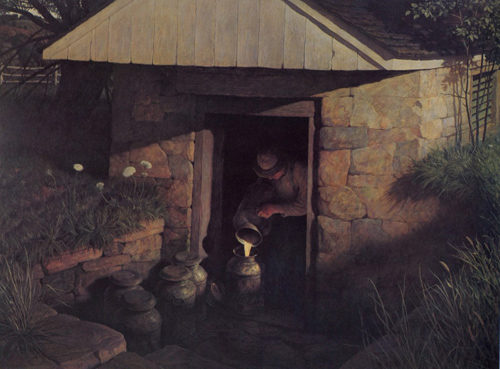
However, it was too late for N.C. to make the full transition from illustrator to fine artist. He would have to hand off the baton to his son Andrew to continue the progress toward “fine art.” N.C. died in a tragic train accident in October 1945.
Andrew Wyeth was N.C.’s fifth child, born on July 12, 1917. Unlike the brawny adventurer N.C., Andrew was a sickly child. His parents took him out of school in the first grade and home schooled him with private tutors and relatives. The family taught young Andrew to prize imagination and creativity. N.C. took personal control over Andrew’s art education when Andrew was 15, inviting him into his studio and training him with life drawing and still lifes. After a year in the studio, Andrew graduated to working outdoors on landscapes at other local farms.
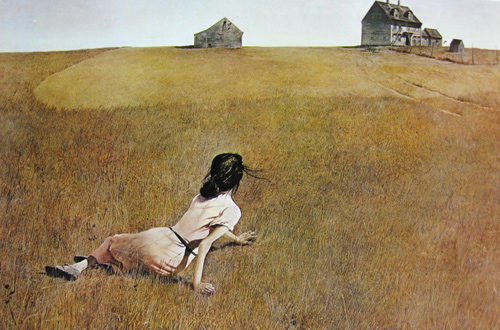
While N.C. worked in oil paint, Andrew began to go his separate way, and in 1936 began working seriously in tempera and watercolor. Andrew had his first one man show on October 19, 1937, at the Macbeth Gallery in New York. The entire show sold out in two days. Andrew was on his way to becoming the “fine” artist his father wanted to be.
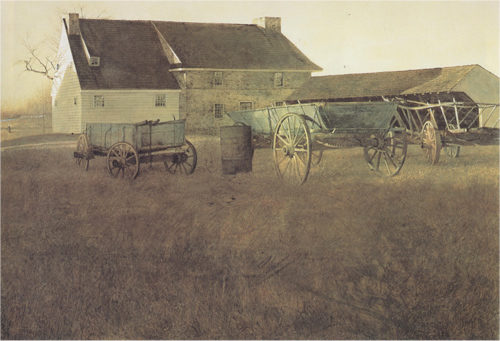
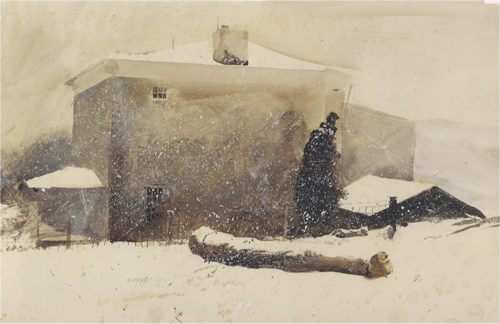
In 1942, Andrew made the cover of American Artist magazine as “one of America’s youngest and most talented artists.” Eventually, major exhibitions of his paintings followed in Tokyo, St. Petersburg, Paris, Beijing, Hong Kong, and other major cities.
Andrew didn’t like to travel much; he preferred to stay home in rural areas and paint. In fact, in his entire life Andrew only took one trip overseas, which was to France to be inducted into the Academy Beaux-Arts. Andrew passed away in 2009.
Andrew’s son, Jamie Wyeth, was born in 1946. Just as N.C. had taken control of Andrew’s art education, Andrew took control of Jamie’s. Jamie left public school in the sixth grade to begin his apprenticeship to his father. Andrew allocated half of his art studio for Jamie to work in. Jamie recalled that the two often painted together, “part pals and part rivals.”
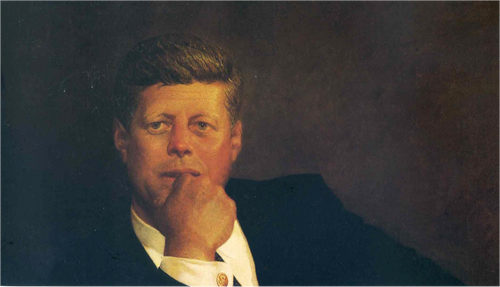
Interestingly, Jamie was more interested in working in the style of his grandfather N.C. than his father. He chose to work in oil paint like N.C., rather than Andrew, because he wanted to achieve the bright colors and thick textured paint that N.C. used. Andrew tended to work with thinner paint and subtler colors. According to Edgar Allen Beem, who wrote about Wyeth in the July 2011 issue of the Post, Wyeth said, “In a funny sense, my grandfather, who I never knew, had more of an influence on me.” In fact, Jamie chose to paint using N.C.’s old paint brushes. He reasoned, “they already made a lot of great paintings, so they know what to do.”
Unlike his grandfather and his father, Jamie became a celebrity artist. The art world was very different in the 1960s and ’70s than it had been in previous generations, so Jamie found himself hanging out with celebrities such as Andy Warhol, Arnold Schwarzenegger, and Rudolf Nureyev.
Ultimately Jamie tired of the fast life of American pop culture and withdrew to a quieter life as his father did.
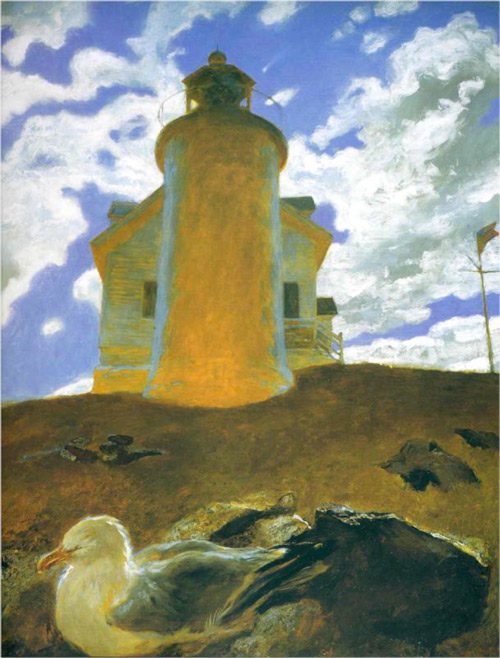
Jamie chose to live on Southern Island in Maine, which had belonged to his parents. “My life is solitary. I’m alone on this island out at sea in Maine, but I don’t find it lonely. Here I am a mile offshore. I have to row back and forth, and that gives me focus in my work.”
N.C. was larger than life, a dramatic swashbuckler of a man. Andrew was quiet and reserved. His art was subtler and more delicate. N.C. painted action scenes with cowboys and bucking broncos, pirates and warriors which Jamie found magical. “Then I go to my father’s studio where he’d be working on a dead bird or dried grass…. He painted a very strange, airless world.”
Like his grandfather, Jamie’s work is more openly expressive and theatrical. But that didn’t bother Andrew. Jamie was carrying the torch forward for the family. Andrew’s final words to his son: “just give them hell.”
Also read Jamie Wyeth: Born to Paint.
Become a Saturday Evening Post member and enjoy unlimited access. Subscribe now
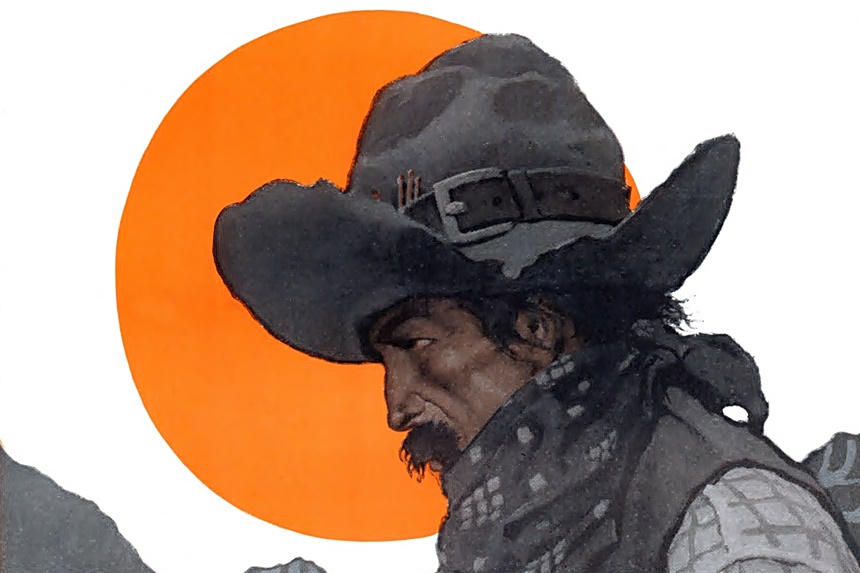

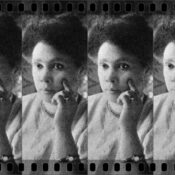
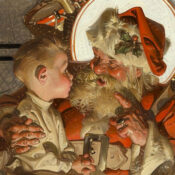
Comments
I drew a pic of Wyeth’s muse.
Thanks for this feature of N.C. Wyeth, his son Andrew and grandson Jamie. Their art is always wonderful to see. They each have their own style and subject matters, but the same talent and dedication remains the same.